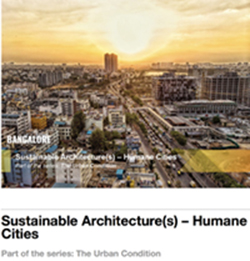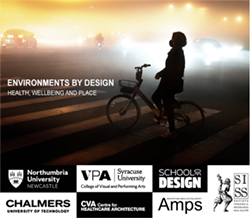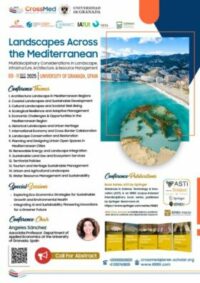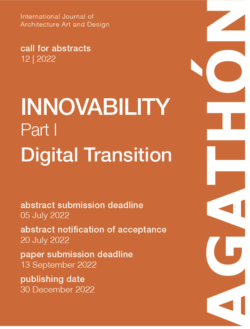ISSN (online): 2075-5309
Call of the Journal:
- Advanced Concrete Materials in Construction
- Advanced Methods for Structural Rehabilitation
- Advances in Civil Engineering Materials: Design, Characterization, Corrosion and Durability
- Climate Resilient Buildings
- Computer Aided Architectural Design
- Innovations in Building Integrated Photovoltaic Systems
- Managing Innovation and Innovation Risks in Construction Projects
- New Approaches to Modelling Occupant Comfort
- Performance-Based Design of Buildings
- Protection of Buildings with Historic, Architectural or Cultural Value
- Recent Advances in Design, Construction, and Maintenance of Buildings
- Seismic Performance Assessment of Buildings
- Seismic Safety Assessment of Existing Constructions
- Structural Dynamics and Analysis of Civil Structures and Engineering Materials
- Sustainable and Green Construction Materials | Opportunities for New and Existing Structures
- Sustainable Concrete Construction | Methods and Practices
- The Architecture of Collective Housing
- Thermal Performance of Buildings and Building Components | Renewed Role, New Expectations, and Old Challenges
Mar
2021
Energy spent on heating and cooling indoor environments is responsible for the largest share of electricity consumption in buildings. Reducing the carbon footprint of the built environment relies on a balance of energy efficiency measures that simultaneously ensure occupant thermal comfort. Overlaying this challenge is a shift towards building designs and layouts that promote well-being, health, and improve occupants’ experience of their space. As such, long-standing paradigms of thermal neutrality and steady-state conditions should be reconsidered. Successfully navigating this changing landscape requires novel approaches to understanding the psychophysical relationship between thermal environments and occupant perception to increase the resilience of humans and buildings in a rapidly changing world.
This Special Issue of Buildings will focus on innovative research efforts to model the thermal experience of building occupants. Of particular interest are works building upon comfort theories reflecting the dynamics involved, such as the adaptive thermal comfort theory or thermal alliesthesia, to better understand the relationship between climate, comfort and energy use in buildings. This includes diverse focus areas such as (i) modifications to existing or new comfort indices, (ii) personal comfort systems, (iii) post occupancy evaluations, (iv) application of building sensor networks, and (v) machine learning techniques. Works that employ laboratory studies, field studies, and numerical simulations are invited. Meta-analyses of existing databases such as the ASHRAE Global Thermal Comfort Database II are also encouraged.
Keywords: Adaptive; Thermal comfort; Comfort models; HVAC; Climate; Occupant behavior; Energy efficiency; Buildings; Statistical modeling.
New Approaches to Modelling Occupant Comfort
Energy spent on heating and cooling indoor environments is responsible for the largest share of electricity consumption in buildings. Reducing the carbon footprint of the built environment relies on a balance of energy efficiency measures that simultaneously ensure occupant thermal comfort. Overlaying this challenge is a shift towards building designs and layouts that promote well-being, health, and improve occupants’ experience of their space. As such, long-standing paradigms of thermal neutrality and steady-state conditions should be reconsidered. Successfully navigating this changing landscape requires novel approaches to understanding the psychophysical relationship between thermal environments and occupant perception to increase the resilience of humans and buildings in a rapidly changing world.
This Special Issue of Buildings will focus on innovative research efforts to model the thermal experience of building occupants. Of particular interest are works building upon comfort theories reflecting the dynamics involved, such as the adaptive thermal comfort theory or thermal alliesthesia, to better understand the relationship between climate, comfort and energy use in buildings. This includes diverse focus areas such as (i) modifications to existing or new comfort indices, (ii) personal comfort systems, (iii) post occupancy evaluations, (iv) application of building sensor networks, and (v) machine learning techniques. Works that employ laboratory studies, field studies, and numerical simulations are invited. Meta-analyses of existing databases such as the ASHRAE Global Thermal Comfort Database II are also encouraged.
Keywords: Adaptive; Thermal comfort; Comfort models; HVAC; Climate; Occupant behavior; Energy efficiency; Buildings; Statistical modeling.
Current Contents – Engineering, Computing & Technology (Clarivate Analytics), DOAJ, Genamics JournalSeek, Inspec (IET), Julkaisufoorumi Publication Forum (Federation of Finnish Learned Societies), Norwegian Register for Scientific Journals, Series and Publishers (NSD), Science Citation Index Expanded – Web of Science (Clarivate Analytics), Scopus (Elsevier), Web of Science (Clarivate Analytics), CLOCKSS (Digital Archive), e-Helvetica (Swiss National Library Digital Archive), Academic OneFile (Gale/Cengage Learning), EBSCOhost (EBSCO Publishing), Google Scholar, J-Gate (Informatics India), Materials Science & Engineering (ProQuest), METADEX/Metals Abstracts (ProQuest), ProQuest Central (ProQuest), Science In Context (Gale/Cengage Learning), WorldCat (OCLC).
Info at: www.mdpi.com/journal/buildings/apc










